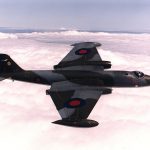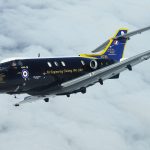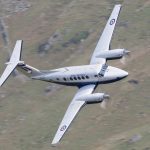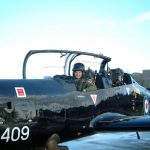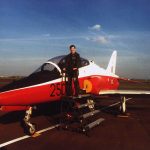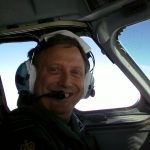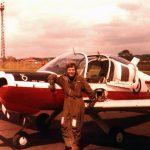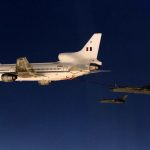IRT Debrief Digest – Capt Steve Oddy – September 2023
Beacon Ident.
Best practice on an NDB approach is to re-identify the NDB on both the outbound and inbound legs of the approach to make up for the lack of in-aircraft failure indications (no need to select ANT). We have no objection to applicants wish to leave the coding on continuously during the approach but they should be aware of the possibility of distraction and missed RT calls; such monitoring should be done through the headphones and not the speaker.
IFR Arrivals.
Applicants are still coming to grief by not being at a cleared procedural level before reaching 5 mins flying time from the holding area while receiving a Procedural Service (iaw PANS Doc 4444-RAC/501). However, others are overreacting and, even though they are receiving a radar service of some kind from an agency who has agreed to get them a level, still start holding at 15 nms to go.
When receiving a LARS from an ATSU a sensible question to ask at the start of the transit is “can you get me a level for the CIT/GST/OX hold and procedure?” If the answer is not a definite “yes” then applicants must ensure they are in 2-way contact with the destination airfield 10 mins flying time away (AIP Gen 3.3.3). If the answer is “yes” then they can stick with the radar until told to change frequency (as long as they are getting a Traffic or Deconfliction Service, not a Basic Service). Really smart cookies could get the cleared level on the other box so they could stay with radar a bit longer.
Timed Procedures.
Some approaches require timing from passing over the beacon, either as the primary way to define the missed approach point or as a secondary means, should the DME fail. Some applicants are forgetting to start the clock at the beacon. Those that do generally have not thought about the time by which they need to be at MDA.
Timing iaw the plate gives the MAPt which is usually the threshold. MDA is normally about 500 ft agl and so needs to be achieved about 1½ nm before the threshold in order to achieve a safe landing. This means achieving MDA around 45 secs before the MAPt timing – one minute to be on the safe side.
Off-airfield Beacons.
Approaches where the beacon is crossed when inbound, give applicants tracking problems. We do not expect applicants to hold +/-5° all the way into the beacon. Some applicants make large corrections very close to the beacon and then hold the correction after beacon passage, leading almost invariably to a failed approach as the approach course is never seen again. Others give up tracking to the beacon too early and accept tracking errors of as much as 20° with a mile to go; this will also lead to a failed approach.
Top Tip – When flying the Seneca V and within 1/2 nm of the beacon, align the track diamond with the course pointer as you transit overhead the beacon and you will transit the beacon very close to overhead.
Rate 1 Turns.
Some applicants are unaware of the relationship between angle of bank and turn rate, thus producing unstable turns while they chase the turn coordinator instead of setting an appropriate angle of bank on the AI.
Descent in the Hold.
There seems to be quite a lot of mis-information regarding when one can descend in the hold. If, while holding, you are cleared for the procedure with no caveats then you may, if you wish, immediately commence a descent to the minimum holding level/altitude shown on the plate. Once beacon outbound you may then continue descent iaw the procedure.
Descending Outbound.
Some applicants believe that you must be within 5° of the outbound track before commencing a descent. This is incorrect; by being within 30° of the outbound course when inbound to the beacon you will be in a safe position to start your descent when crossing the beacon (Doc 8168-Ops Fig I-4-3-3). Obviously you should then aim to be within 5° as you progress outbound.
Not-below Altitudes.
We have been asked about ‘not below’ altitudes on Aerad and Jeppesen plates. The definitive document for approaches is the AIP. In this document some altitudes are barred and some (like holding altitudes and platform altitudes on many procedures) are not. In accordance with PANS-OPS, any barred altitude below the FAF will be treated as a ‘not-below’ altitude and the test tolerance on that altitude will be minus zero feet. Unless marked otherwise, altitudes on Jeppesen plates are ‘not below’ altitudes. The word ‘Mandatory’ next to an altitude on a Jeppesen plate indicates that the altitude is an ‘at altitude’ – not above and not below.
CDFA.
EASA Part-CAT now requires all public transport operators to fly a continuous descent final approach (CDFA) when there is sufficient information to do so. ATOs are strongly recommended to teach the CDFA rather than the stepped or ‘dive and drive’ approach. If the Ops Manual requires a CDFA to be flown then it will also state the allowance to be added to MDA to give the go around altitude.
Applicants will be expected to follow the descent profile on the plate and then go around on reaching their MDA plus allowance. At this point the aircraft should be on a stable approach in a position from which a safe landing could be made.
The altitude tolerance during this approach is not laid down, but obviously, any ‘not below’ altitudes must be observed and the approach should not involve larges changes in rate of descent; approaching MDA the PAPIs should not be showing 4-reds or 4-whites.
The examiner may or may not remove the last screen/hood approaching MDA. If the screen/hood is not removed, then a go around should be initiated so that the aeroplane does not descend below MDA. If the screen/hood is removed then the approach should be continued visually if the runway environment is in view.
Stepped Approaches.
For those approaches where a CDFA is not possible (ie no DME) or not appropriate (ie circling where there is no runway associated with the procedure) there will be no plus height limit on ‘not below’ altitudes as most of these are hit during the descent phase and so it’s up to you how high you are going over them, bearing in mind that you want to achieve a reasonably steady final descent. Indeed, on some approaches the ‘not below’ altitudes are significantly below the notional 3° glidepath and descending to these altitudes may contravene noise abatement requirements (see below).
Below the IAF altitude tolerances will be minus 100 ft with the caveat that, if the aircraft is levelled at a step altitude then the normal +/-100 ft tolerance will apply. On an ILS, once you are following the electronic glidepath, even if you pick it up from radar vectors before the published FAF, you are not bound by ‘not below’ altitudes – these are for localizer-only approaches. Similarly, if you are being vectored for an approach, the height tolerance of +/-100ft will apply even if you have been descended below the procedural FAF altitude.
Descent Rates.
As well as en-route descents, the AIP requires descents in the hold, above TL, to be flown at a minimum of 500 ft/min. This allows ATC to descend stacked aircraft simultaneously, knowing that the descents will maintain vertical separation. There is no such rule for descents below TL and in the procedure itself. However ATC will generally assume that, if you call “leaving 3500 ft”, you will be descending at 500 ft/min minimum for the first 1000 ft. After that the descent rate is up to you. This allows ATC to immediately descend another aircraft to your vacated altitude.
Descending Inbound.
We have seen some confusion regarding the inbound descent on an NDB approach. PANS-OPS (Doc 8168-OPS/911 3.3.3.4) requires that the aircraft is within 5° of the inbound course before any descent can be initiated inbound. This requirement starts from the completion of the inbound turn, not just from passing the Final Approach Fix.
Landing Gear.
We have seen a fair number of gear-up approaches on the asymmetric 2-D approaches. Most of these have resulted in high, fast, unsuccessful approaches even if the gear position has been noted and corrected at a late stage. The approach often becomes unsuccessful from a safety point of view where the applicants put the aircraft at ACA around 20 kts fast and too close to the airfield, claiming that they could land from the approach. Proving an applicant’s safety is what the IR is all about and so an early decision to go around from a bad approach is more likely to save the day than continuing.
Circling Approaches.
Applicants have been unsure of what to do with the gear and flaps during a circling approach. On some procedures some applicants have automatically selected flap on going visual, even when asymmetric, requiring them then to use high power on the live engine to remain in level flight or, in some aeroplanes, such as the DA42, results in a loss of airspeed and/or altitude even with full power selected.
Whether the gear should be down or not during an asymmetric circling approach is a moot point. Our advice is that it should be in order to keep the standard settings for an approach and to cater for changes of plan at the last moment requiring a landing from the approach with little time to configure the aircraft. This decision should be reviewed if maintaining altitude becomes a problem.
Strictly speaking, one can descend below circling minimum once continuous visual contact with the threshold is assured (simplifying the PANS-OPS requirements slightly). However, we will treat the circling minimum as a ‘not below’ altitude (+100 ft minus 0 ft) until the visual base leg is commenced in order to simulate minimum visibility.
Visual Transition.
Some applicants are risking a failed approach because of a poor visual transition. On a stepped approach it is not uncommon, when the hood/screens are removed as the aircraft reaches MDA with the PAPIs showing 2 reds/2 whites, for the applicant to maintain level flight until 4 whites are shown. The subsequent steep approach often results in 4 whites and 100 kts plus at ACA which will result in either a failed Section 5 or a failed Section 6.
Transitioning on a CDFA should be easier as the aeroplane should already be on a stabilised approach. At ACA applicants must be in a position to land the aircraft if required, which means carrying out a stable approach from MDA to ACA at the correct speed and angle. Decisions to land at ACA from a bad approach are unsafe and will be penalised; decisions to go around will probably result in another chance to get it right.

